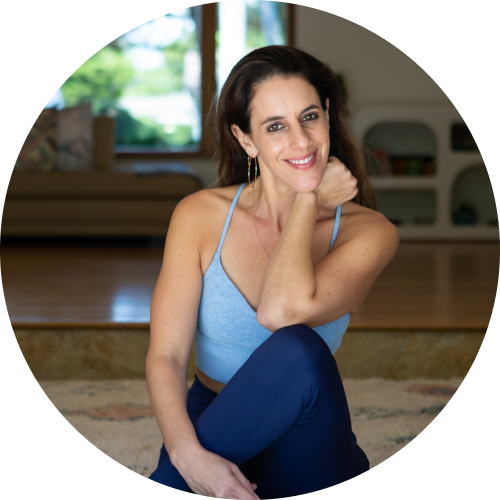
Lauren Ohayon is the creator of Restore Your Core® (RYC®), a comprehensive and sustainable whole-body fitness program that empowers women to achieve ideal pelvic floor / core function and be strong, long, mobile and functional.

Before you begin any exercise routine, consult with your doctor for medical clearance. Practice patience with yourself and your body, and rest, lots of rest! I recommend waiting at least 8-10 weeks before beginning any form of exercise.
Postpartum yoga can be a relaxing and beneficial way to begin introducing exercise into your daily regimen, but don’t feel bad if you’re not ready after the recommended 8 weeks after birth — every recovery looks slightly different, and for some women, it can take even longer before they return to exercise.
Postpartum yoga can aid the healing of your abdominal muscles, build pelvic floor and core strength, and improve body alignment and your mental health. As you begin adding specific yoga poses into your daily routine, you may begin experiencing relief from diastasis recti, pelvic floor issues, tight shoulders, chest, and hips, while also helping you feel more energized and relaxed when caring for your baby.
It’s important to note that not all styles of yoga are appropriate for postpartum recovery. It can be confusing for new moms with all the different forms of yoga and different ways to practice. That’s why it’s so important to find a movement class specifically tailored to your needs, in this case, your postpartum recovery.
In this article, we hope to address any questions or concerns you may have about practicing postpartum yoga.
Get free expert advice and start your postpartum healing journey today
Table of Contents
Postpartum yoga is a selection of yoga poses that are adapted and modified for your postpartum body. It’s a specialized practice that recognizes the physical, emotional and energetic changes your body goes through when you give birth and during recovery. It is much gentler than regular yoga and can help relieve symptoms of diastasis recti and a weakened pelvic floor. It’s also a way to relax and gradually regain strength as you recover.
Postpartum and Postnatal yoga are the same thing and the names are often used interchangeably.
While both regular yoga and postpartum yoga share the foundation of mindful movement and breath, the latter brings a specialized and nuanced approach that acknowledges the unique experiences of postpartum individuals. It serves as a gentle, supportive bridge for new mothers to reconnect with their bodies, promotes healing, and navigates the postpartum journey with mindfulness and care.
The main differences between postpartum and regular yoga:
We recommend taking your time to heal and bond with your baby before you start exercising. So often, women struggle with feeling they need to get back into their normal regimen and daily activities without allowing proper time for rest and recovery. This can be especially true of women who experienced no pregnancy complications or delivered naturally. Allowing 8 weeks minimum before you start postpartum yoga or any other type of exercise is important for your health and overall well-being.
Engaging in exercise too soon after birth can put you at an increased risk of pelvic organ prolapse. Your core and lower back muscles are often weaker than before pregnancy and your joints and ligaments are more supple and flexible. That means you are more likely to cause injury the first few months after your baby is born.
Your whole body and especially your pelvic floor have been through a lot during pregnancy and birth and it’s normal to not be as strong as it was before you got pregnant. Your pelvic floor muscles are generally much weaker after delivery so if you go for a run or choose a high-impact activity, this can put pressure on your weakened muscles, which in turn can cause pelvic organ prolapse or long-term bowel and bladder problems. Equally, if you start doing intense core work and have undiagnosed dIastasis recti, you can risk the gap not closing.
We can’t emphasize enough how important it is to rest and only return to exercise gradually once you feel ready. Even then, it’s not a straight line to recovery, and there may be days when your body just can’t do what you want. Be kind to yourself and your body; this is not a quick fix.
Take 3 steps toward doing the things you love again postpartum
If you had an uncomplicated vaginal delivery, you may begin feeling like yourself much sooner than someone who experienced either a c-section or complications during their delivery. However, it is still important to rest and to gradually introduce yoga poses into your daily routine. Make sure that you feel comfortable during your exercises, and if you experience any pain or discomfort, wait a few more days to a week before returning to your yoga practice.
If you delivered via c-section, it may take longer for you to begin feeling like yourself again. That’s okay! You’ve experienced a lot of trauma and pain during your delivery and it is important for you to rest. We recommend a 5-5-5 step program – 5 days in bed, 5 days within reach of your bed, and 5 days within a short distance of your bed. Talk with your doctor before beginning any exercises or yoga poses that may affect your abdominal muscles and belly.
There are yoga poses to avoid after c-section as they put excessive strain on healing tissues. These include:
There are many benefits to be gained from adding postpartum yoga into your daily routine:
Discover the top 3 steps to regain your fitness and strength postpartum–free
There are many approaches to postpartum yoga. At RYC® we have adapted traditional yoga to be more appropriate for postpartum healing. We have taken the time to ensure all of the movements are 100% core and pelvic floor-approved and safe for your postpartum healing journey. Below we have compiled a selection of RYC® approved movements we believe are beneficial in your early recovery.
Get 3 (free) scientifically-proven steps and regain your postpartum strength and fitness
You can find our postpartum-safe, adapted core and pelvic floor-approved exercises in our 12-week online program, Restore Your Core®.
Embarking on a postpartum yoga journey is a gentle and mindful way to reconnect with your body after childbirth. It offers a tailored approach to physical recovery, emotional well-being, and pelvic floor health. While postpartum yoga is not a one-size-fits-all solution, it provides essential benefits such as improved body awareness, posture alignment, and mental health. As you consider postpartum yoga, remember the significance of patience and rest in your recovery process. Whether you’ve had a vaginal delivery or a C-section, gradual reintegration of yoga poses, like those mentioned in our article, can support your healing journey. Restore Your Core® (RYC®) incorporates postpartum-friendly movements, offering a holistic approach to recovery.
Postpartum yoga is a low-impact practice adapted for the postpartum body, focusing on physical recovery, mindful adaptations, emotional well-being, and pelvic floor awareness.
We recommend waiting at least 8 weeks after birth before starting postpartum yoga to allow proper healing, especially for pelvic floor and core muscles.
Postpartum yoga offers body knowledge, alignment restoration, support for postpartum complications, and mental health benefits, including stress reduction and postpartum depression support.
While RYC® is not a postpartum yoga program, it includes postpartum-friendly movements. Begin with gentle poses like Puppy with Shoulder Stretch, and Seated Cat Cow, and incorporate mindful breath exercises like Candles – Supine with Feet on the Floor.
For those who had a C-section, it’s crucial to consult with your doctor before starting postpartum yoga. Generally, it may take longer to begin, and the 5-5-5 step program (5 days in bed, 5 days within reach of your bed, 5 days within a short distance from your bed) is recommended.
Remember, postpartum recovery is a unique journey, and it’s essential to listen to your body, progress gradually, and seek guidance from healthcare professionals when needed.
Results from pelvic floor exercises can vary, but most women start to notice improvements within a few weeks to a few months of consistent practice. It typically takes around 6-12 weeks to see significant changes in muscle strength and symptom relief. Persistence and proper technique are key to achieving the best outcomes.
Although the pelvic floor may not have experienced the same level of strain as during a vaginal birth, pregnancy itself can weaken these muscles. Starting gentle pelvic floor exercises after a C-section can aid in recovery, improve core stability, and prevent issues like incontinence. It’s important to wait until your incision has healed and your healthcare provider gives you the green light to begin exercising.

“There is no thank you big enough for Lauren Ohayon existing and thinking and helping so many of us. Every time I do something I never thought I’d do again she is part of the reason why.”
Laura Gregg
in this FREE video and get the support you deserve
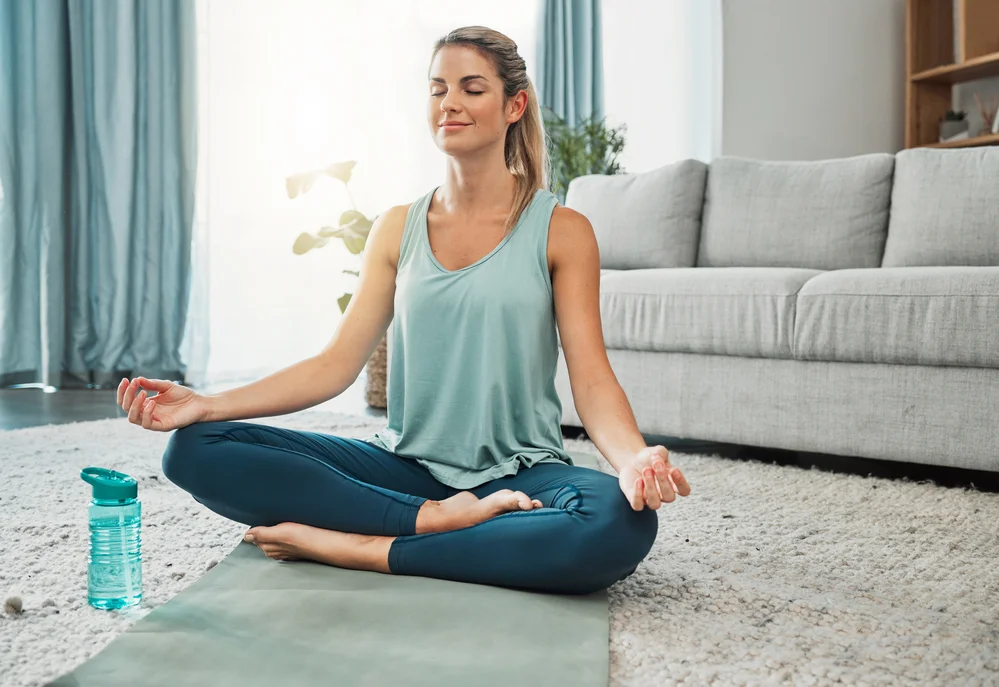
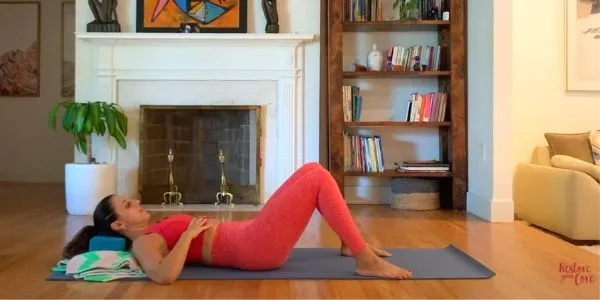
Postpartum physical therapy can be a great way to restore function and strength in your core and pelvic floor muscles. Giving birth places a strain on your body and it...

The postpartum recovery period typically lasts well beyond common expectations. Guiding and supporting your postpartum patients and clients through this transitional period requires effective strategies tailored to their individual needs....

Postpartum recovery can be difficult for anyone, but there are particular considerations to keep in mind after a C-section. Read on to learn more about how to begin a safe...

Have you just had a baby, or are you about to give birth? Read on for pelvic floor exercises that facilitate faster postpartum recovery, enhance overall well-being, and improve long-term...
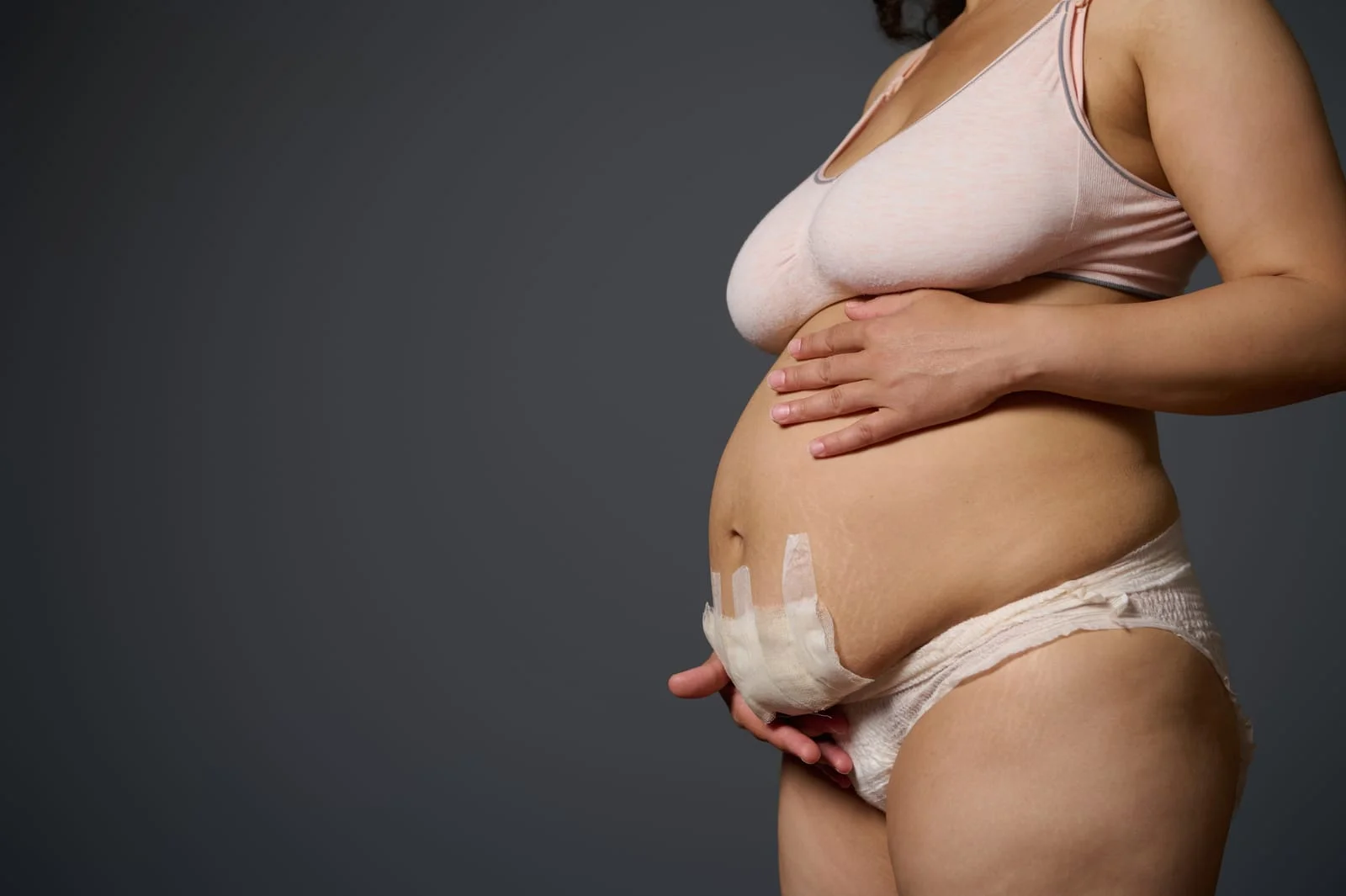
Introduction Pregnancy and delivery are a massive undertaking. Your body has to adapt and expand to allow the baby to grow, and having a C-section means you face a whole...

It is not uncommon for many postpartum people to experience complications such as pelvic organ prolapse postpartum. Vaginal and rectal prolapse occur when the supporting muscle and tissue structures become...

Giving birth takes a toll on your body – both physically and emotionally. Many postpartum people will feel overwhelmed and exhausted after giving birth, which can make it difficult to...
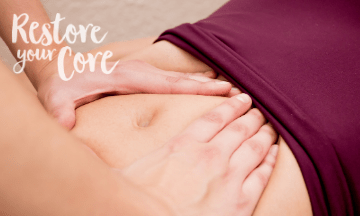
Post-pregnancy pain, whether it be pelvic floor pain or joint pain, is a shared experience among many postpartum people. However, postpartum pain, especially in pelvic pain, can vary in frequency,...

*No spam, just quality content and support
Please check your inbox soon.

Take 3 steps toward doing the things you love again postpartum
© 2025 RYC®. All rights reserved.
in this FREE video and get the support you deserve